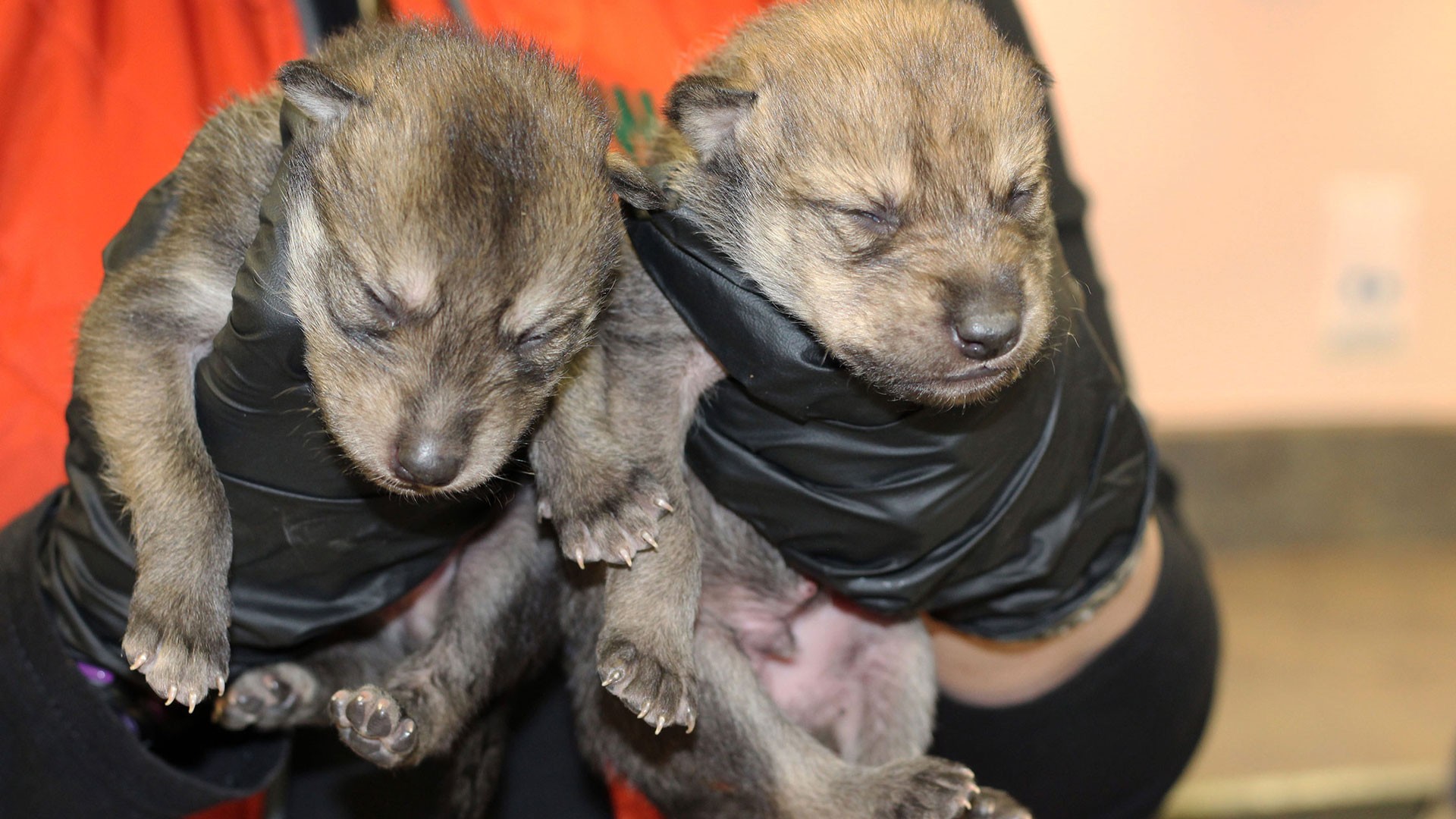 These two Mexican gray wolf pups and siblings were born at the Wolf Conservation Center in New York. They are considered "neonatal" and less than 14 days old.
These two Mexican gray wolf pups and siblings were born at the Wolf Conservation Center in New York. They are considered "neonatal" and less than 14 days old.
In its eighth consecutive year of recovery, the endangered Mexican wolf population is still on the rise.
According to the results of the annual count of the wolves by the U.S. Fish and Wildlife Service, the population increased by 6%.
As of 2023, the population stands at a minimum of 257 Mexican wolves across Arizona and New Mexico, up from 242 that were counted in 2022.
The survey results found 144 wolves in New Mexico and 113 in Arizona.
Last year’s numbers also unveiled the existence of at least 56 packs, 36 in New Mexico and 20 in Arizona.
By definition, a wolf pack is two or more wolves within an established home range.
This trend signifies the longest continuous period of population growth since recovery efforts began for the endangered subspecies.
The animal conservation agency has further reported success in cross-fostering initiatives.
As an effort to increase genetic diversity, the cross-fostering program involves transferring Mexican wolf pups born in captivity at a specified breeding facility, into a wild wolf den with pups around the same age.
In the past year, approximately 138 wolf pups were born, with at least 86 surviving until the year’s end reflecting a 62% survival rate.
Typically, wild wolf populations exhibit a 50% survival rate for pups in their first year.
The report identifies 26 breeding pairs, with 15 in New Mexico and 11 in Arizona as of last year.
To date, at least 15 fostered Mexican wolf pups have survived to breeding age, and a minimum of 10 fostered pups have successfully bred and produced over 20 litters in the wild.
Some of these offspring have gone on to independently produce pups.
Since 2016, 99 pups have been strategically placed into 40 wild dens.
Data for the survey is collected between November and February, by the Interagency Field Team, a collaborative effort made up of partners from the FWS, Arizona Game and Fish Department, New Mexico Department of Game and Fish, and other federal agencies.
Mexican wolves were initially reintroduced into the wild in 1998, and are listed separately from the gray wolf under the Endangered Species Act.

By submitting your comments, you hereby give AZPM the right to post your comments and potentially use them in any other form of media operated by this institution.